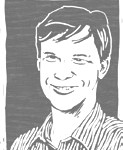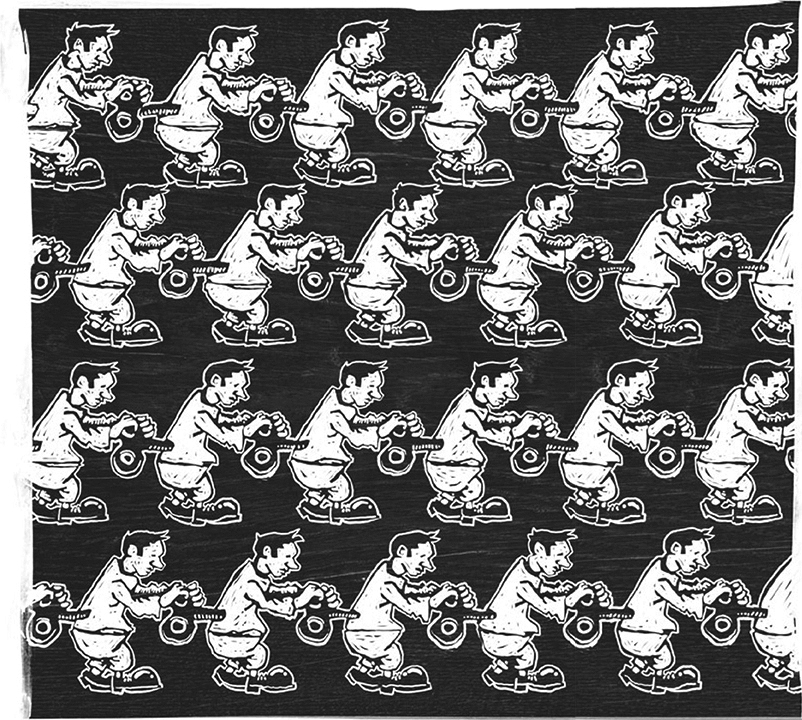The nursing sector is fundamentally different from other sectors in its unique relationship between management, workers, and customers. Research has merely begun tackling this difference within the last years. Yet, as David Scheller-Kreinsen and Britta Zander advocate, rethinking the sector is of utmost importance. Read here, how current research projects yield promising new insights.
Current thinking about nursing suffers from two interrelated deficiencies: a false concept of a) the nature of the employment relationship in nursing and b) the nature of outputs in nursing. Increasingly research indicates that misconceptions on these issues may imply fatal outcomes and therefore they must be treated as a question of life and death.
The nature of the employment relationship in nursing
When economists discuss the future of labour, they tend to talk about productivity, profits, wage levels or the distributional consequences of labour market arrangements. Sociologists and psychologists on the other hand have a tendency to focus on (the erosion of) collective labour market institutions or issues such as employee participation or work satisfaction. Research on nursing for a long time was conducted along similar lines. It concentrated either on the management perspective and scrutinised issues such as efficiency, profits and absenteeism or it focused on the perspective of nurses and analysed burn-out, job satisfaction or their material status.
 However, over the last two decades, it has been established that “there are unique factors in service work [such as nursing] that make its separate analysis essential”. The most important factor is that there is direct contact of workers with customers. Taking this perspective it becomes clear that discussing the future of nursing narrowly in the context of the (antagonistic) relationship between nurses and management is misleading. Instead, employment relations in nursing have to be understood as a three way relationship between workers, management, and customers (in this case: patients). As a consequence of this, analyses of the management practices in nursing not only need to take account of the economic implications or the impact on nurses’ well-being, but must in addition scrutinize the effect on patients’ health. Similarly, the well-being of nurses cannot solely be understood in terms of the relationship with management as their well-being is also influenced by their relationship with patients.
However, over the last two decades, it has been established that “there are unique factors in service work [such as nursing] that make its separate analysis essential”. The most important factor is that there is direct contact of workers with customers. Taking this perspective it becomes clear that discussing the future of nursing narrowly in the context of the (antagonistic) relationship between nurses and management is misleading. Instead, employment relations in nursing have to be understood as a three way relationship between workers, management, and customers (in this case: patients). As a consequence of this, analyses of the management practices in nursing not only need to take account of the economic implications or the impact on nurses’ well-being, but must in addition scrutinize the effect on patients’ health. Similarly, the well-being of nurses cannot solely be understood in terms of the relationship with management as their well-being is also influenced by their relationship with patients.
Research from the United States by Linda Aiken confirms that taking account of the three-way employment relations in health care settings is of utmost importance. She finds that the approaches towards human resource management in nursing, the wellbeing or job satisfaction of nurses, and the quality of care delivered to patients substantially correlate and mutually influence each other. Furthermore, more recent studies explicitly reveal the importance of nurse staffing, education, and management practice in determining hospital mortality. Surgical patients in hospitals with better nursing work environment, better staffing (fewer patients per nurse), and better educated nurses have roughly 30% lower prospects of dying. Hence, evidence suggests that the future of labour in nursing increasingly needs to be understood as a vital question of life and death.
The nature of outputs in nursing
Adam Smith in 1776 famously argued that “The services [of the service worker] generally perish in the very instant of their performance, and seldom leave any trace or value behind them”. Current management practices in nursing seem to be greatly inspired by this early and famous theorist of the emerging capitalist system. They focus on easily measurable quantitative aspects of nursing work, which include for example the number of patients given a bath per shift, length of stay in a hospital bed or the delivery of medical procedures — just as if their services would perish in the moment of their performance without being directed towards higher goods.
“The services generally perish in the very instant of their performance, and seldom leave any trace or value behind them” Adam Smith
Nevertheless, health service research has for long established that delivery of activities or medical procedures in itself can hardly be considered the output or goal of nursing. Rather the value of the work of nurses is expressed in the contributions of these activities to health or to the well-being of patients. By concentrating on easily measurable activity measures, current management approaches therefore tend to prioritize routinisation, rationalisation, and efficient delivery of tasks over the logic and outputs related to patients.
A starting point for re-assessing the future of labour in nursing — the RN4Cast project
To develop a better understanding of the patterns and implications of the three-way employment relationship and to account for patient centred outputs in nursing European nursing researchers and health economists have joint forces in a pan-European project. In January 2009 the 3-year RN4Cast (Registered Nurse Forecasting) project started to scrutinise the effects of different human resource management approaches (staffing levels, work organisation, education and training) on nurse job satisfaction and specific patient outcomes such as mortality. The project is funded by the European Commission’s Seventh Framework Programme and coordinated by the Centre for Health Services and Nursing Research from the Katholieke Universiteit Leuven (Belgium). Beyond fostering the understanding of the employment relationship in nursing, the project also aims at developing new management approaches that take account of patient outcomes and nurses’ needs. The consortium consists of representatives from 11 European countries who currently collect data on nursing staff deployment as well as work environment by surveying a minimum of 15000 nurses in more than 350 hospitals within the participating countries. The information from the nurse surveys as well as hospital characteristics will subsequently be linked with patient outcomes data which is extracted from routinely collected hospital discharge data. This approach allows to explore to what extent various characteristics of the nursing work environment, nursing staff deployment and hospital characteristic influence nurse recruitment, retention, quality of patient care, and patients outcomes (e. g. mortality; failure to rescue). Furthermore, by combining the nurse survey information with patient discharge data, the project investigates whether certain clinical patient outcomes (e. g. high mortality rates among young patients) influence the burnout risk of the nurses and vice versa. By 2011 the project intends to enable policymakers across Europe to formulate more appropriate management approaches that take account of the three-way employment relationship in nursing and that define organisational goals in terms of patient outcomes.
“Employment relations in health care settings is of utmost importance.”
Understanding the complexity of disaster risk reduction and mainstreaming its practice across society is an immense task, but the integration of indigenous knowledge into disaster management policy and practice will make that task a lot more achievable. To fully realise the benefits of this information, however, disaster management practitioners will have to don a pack and head on out—remembering that whatever the challenges faced in the field, time spent there is rarely wasted.
 David Scheller-Kreinsen currently works as a Research Fellow at the Technical University ( TU ) Berlin, Department of Health Care Management. He holds a Master’s degree in Public Policy from the Hertie School of Governance and has spent a semester at the GPPI in Georgetown. In the past, David has interned in various national ministries and consultancies and has worked as a project manager at the Lauphana University in Lüneburg, Germany.
David Scheller-Kreinsen currently works as a Research Fellow at the Technical University ( TU ) Berlin, Department of Health Care Management. He holds a Master’s degree in Public Policy from the Hertie School of Governance and has spent a semester at the GPPI in Georgetown. In the past, David has interned in various national ministries and consultancies and has worked as a project manager at the Lauphana University in Lüneburg, Germany.
 Britta Zander works as a research assistant in the department Health Care Management/WHO Collaborating Centre for Health Systems at the TU Berlin and is responsible for the project “RN4Cast”. She has a Master of Science in Economics and Management Science from the TU Berlin and has furthermore worked and studied at the National University of Singapore.
Britta Zander works as a research assistant in the department Health Care Management/WHO Collaborating Centre for Health Systems at the TU Berlin and is responsible for the project “RN4Cast”. She has a Master of Science in Economics and Management Science from the TU Berlin and has furthermore worked and studied at the National University of Singapore.
This article originally appeared in the “The Future of Labour” Edition of Schlossplatz3 in Spring 2010. From 2006 to 2014 Schlossplatz3 was the official student magazine of the Hertie School of Governance.
